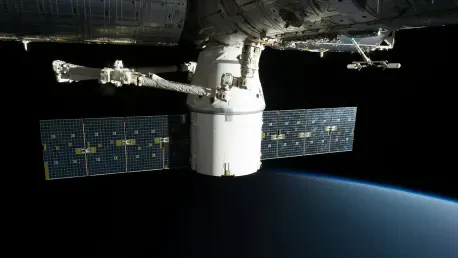The ongoing advancements in satellite communication are reshaping how individuals and businesses access information globally. A significant development in this field is the Federal Communications Commission’s (FCC) decision to repurpose the upper 12GHz band for satellite services, marking a pivotal shift in spectrum management. By reallocating underutilized frequencies, the FCC aims to address skyrocketing demand for broadband, importantly affecting underserved areas. This analysis unpacks the potential implications of this strategic move, highlighting trends and projections that could define the future of satellite internet.
Context and Significance of Spectrum Reallocation
The decision to reallocate the 12GHz band is not merely technical but stands as a critical step in addressing past regulatory barriers and aligning with evolving communication needs. Previously envisioned for expanding terrestrial wireless services, consensus on its optimal use was not achieved until FCC Chairman Brendan Carr redirected focus toward satellite services. His approach advances national interests by balancing spectrum use between space-based and terrestrial technologies. This reimagining of spectrum utility signals a shift toward leveraging space infrastructure to meet modern communication demands, particularly in rural and hard-to-reach regions.
Examining Market Dynamics and Emerging Trends
Satellite Potential and Operator Interest
The shift to open over 20,000MHz for satellite broadband presents transformative opportunities for operators such as SpaceX, who are eager to expand their market presence. This transition is expected to significantly enhance current satellite capabilities, supporting a new phase of innovation in space-based internet services. However, realizing these benefits requires navigating challenges such as international cooperation and technical complexities to ensure effective deployment and integration within existing networks.
Adjusting Terrestrial Strategies
While promoting advancements in satellite technology, Carr’s initiative simultaneously redirects attention toward alternative terrestrial spectrums, particularly the upper C-band. His plan to auction AWS-3 spectrum and possibly organize a C-band spectrum auction underscores an intention to maintain equilibrium in spectrum allocation. However, such realignments involve risks, including potential market disruption and the need for smooth spectrum transition processes. It reflects an adaptive strategy that anticipates and responds to changing technological landscapes and market demands.
Complexity in Global Coordination
Spectrum management’s complexity is compounded by diverse regulatory frameworks across regions and varying rates of technological adoption. Innovative developments like low Earth orbit satellites further add layers of opportunity and complexity. As the FCC seeks to harmonize these global efforts, expert insights suggest that thorough planning and collaboration with international bodies are essential to avoid conflicts and promote seamless technological advancement.
The Path Forward
The FCC’s initiative promises to redefine the satellite internet landscape. As technology evolves and market demands change, regulatory adaptations will be crucial in shaping the competitive environment for satellite services, potentially driving down costs and enhancing service quality. The future of satellite internet envisions a period of significant transformation, impacting communication networks on a global scale.
Strategic Considerations and Recommendations
The strategic importance of balanced spectrum allocation as a driver of innovation cannot be overstated. Collaboration among industry stakeholders, regulators, and international organizations will be vital to exploiting this opportunity fully. Businesses and consumers alike should stay updated on regulatory developments and advancements in satellite tech to leverage strategic benefits and navigate this changing landscape effectively.
Reflecting on Long-Term Impacts
The FCC’s bold move to reimagine spectrum strategy has signified a commitment to modernizing communication infrastructure. As the industry evolves, the delicate balance between satellite and terrestrial services remains central to ensuring comprehensive global connectivity. This transformation offers stakeholders a chance to redefine internet access and sustainable growth, carving a competitive edge in a rapidly evolving digital space.









